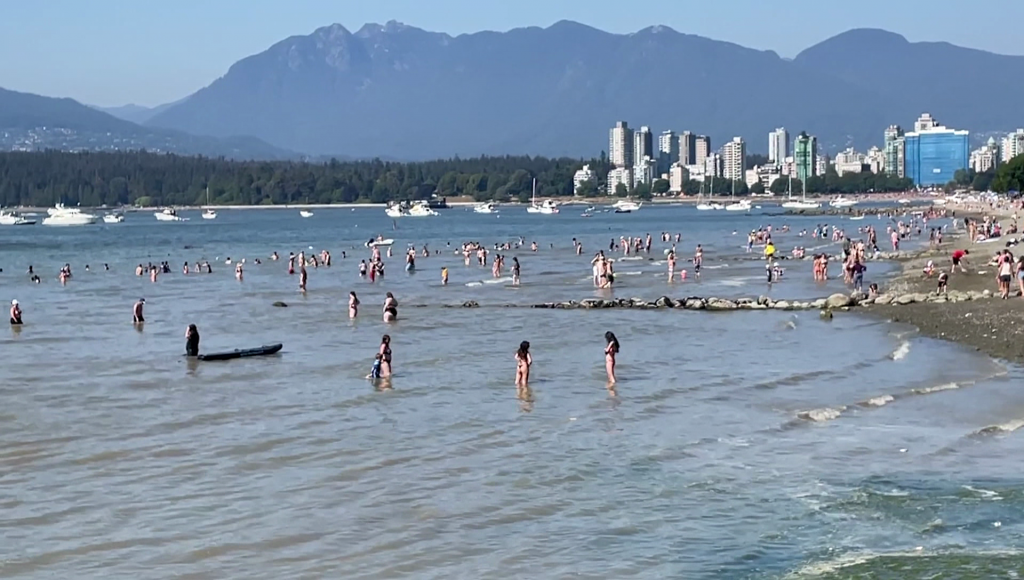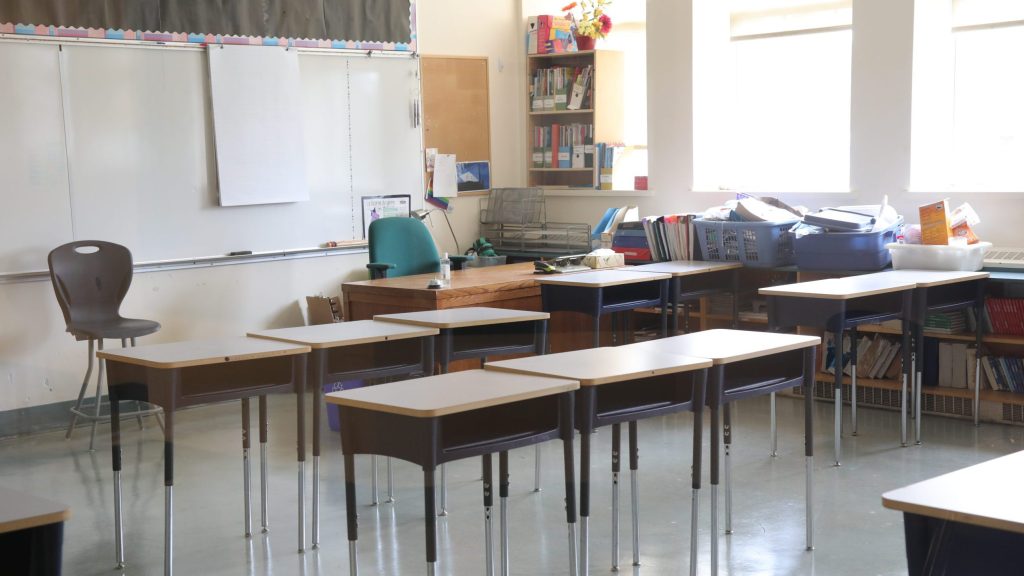No rain in sight, B.C. moves into highest drought rating

Posted October 7, 2022 7:19 am.
Last Updated October 7, 2022 10:28 am.
We’ve now pushed into the most severe drought rating for Metro Vancouver and some other parts of B.C.’s parched south coast, with no real relief in sight.
Much of the region is now at level five, right at the top of the province’s scale — the Lower Mainland basin, including Squamish, along with the Sunshine Coast and western Vancouver Island.
The rest of the Island, the region stretching from the Fraser Valley to areas north of Pemberton, the Kettle Basin east of Kelowna, and the entire northeastern corner of B.C. is just one level below, at level four.
The unseasonably warm, dry weather has also prompted Metro Vancouver to extend Stage One watering restrictions.
Related Articles:
-
B.C. sets 11 more October temperature records amid warm, dry spell
-
Minnekhada wildfire fund to help with Coquitlam park recovery
-
Brown marmorated stink bugs in Metro Vancouver raise concerns
The regional district would normally lift restrictions on Oct. 15, but they are now in place until Oct. 31 to try to protect the region’s drinking water until the rain returns.
“The region has been experiencing a long period of warm, dry weather since mid-July that is extending into October, historic low river inflows, and higher than average water demands for the time of year,” Sav Dhaliwal, chair of Metro Vancouver’s Board of Directors, said.
“We need to ensure our current drinking water supply is preserved until the rain returns. We are increasingly seeing unexpected weather patterns due to climate change, and we can’t make assumptions about when the rain will start again.”
Metro Vancouver’s reservoir levels are within the normal range for this time of year, but residents are still being asked to conserve water.
“Water conservation should still be top of mind for Metro Vancouver residents. We have world-class drinking water and it is a precious resource that must be managed and used wisely,” Jennifer Saltman, a spokesperson for Metro Vancouver, said. “Creating good water-saving habits not only helps ensure enough water is available in our hot, dry summers, but it can also help delay our need to build new infrastructure, saving tax dollars.”
Will the prolonged hot, dry weather affect hibernation patterns for the region’s wildlife?
In a typical October, many black bears on the south coast would normally start looking for dens around mid-month for hibernation through the colder months ahead.
“It does depend how long into the fall this goes. Most bears won’t start denning until mid-October at the earliest,” Dr. Clayton Lamb, a wildlife scientist at the University of British Columbia, said. “If we were to go back to baseline temperatures later in October, I don’t think it would impact them that much. But if it continues, we could see a shift in denning times.”
Some long-term studies of bear denning behaviour in North America suggest a warming climate — longer falls, shorter winters, and earlier springs — is resulting in shorter hibernation times and the potential for more human conflict, but Lamb says food availability is also an important factor.
“It’s not just warmth, per se. The bears are choosing to den when they are no longer adding calories and they are burning more calories than they are taking in. Then it’s time to den — conserve what you have and wait for the spring,” he told CityNews.
Related Articles:
-
Black Bear attack near Dawson Creek leaves two women critically injured: RCMP
-
Sierra Club BC takes province to court over emissions targets
-
Record-breaking October weather enjoyed by Metro Vancouver kayak business
“It’s more about this longer term, climate change signal that if berries are riper later, that would the biggest driver of bears changing when they den.”
Lamb says denning times can also vary greatly from bear to bear — up to a month and a half, depending on the individual animals.
“It’s not as if we have this tight signal where all bears den on October 15th one year and then we can tell next year that it’s dramatically different.”
Regardless, he suggests if denning behaviour is affected by the weather, it can cause problems.
“We want bears to den, for sure, at least in the places where they do den. For the Lower Mainland, Vancouver out to Chilliwack, some of those bears only den for a couple months, or a really short period. They might just dig under a stump for a couple of weeks because the winter is not that long. But in places with a pretty substantial winter, like Whistler or across the rest of British Columbia, you definitely don’t want to be delaying those bears denning, whether it’s due to human sources of food or it’s due to climate change.”
Temperature records continue to break
Meanwhile, CityNews meteorologist Michael Kuss says 21 temperature records were broken Thursday, as the heat continues well into harvest season.
Records across the province have tumbled recently, and no area of the province has been untouched.
Bella Bella, Burns Lake, Whistler, and Powell River were just some of the areas that saw their records broken, while multiple places in the Lower Mainland were also affected.
Abbotsford saw a new record high of 27.2 C Thursday, with the old record of 26.7 C untouched since 1952.
Chilliwack recorded 29.2 C Thursday, with the previous record in 1952 hitting 27.8 C.
Pitt Meadows also hit a new record, with 26.1 C being recorded Thursday. The previous record for Oct. 6 was in 1978 and saw the city hit 24 C.










